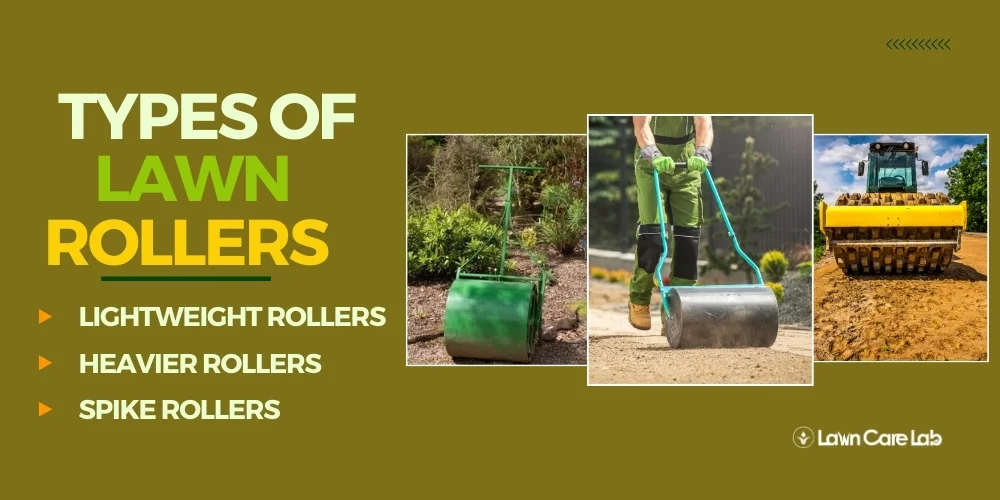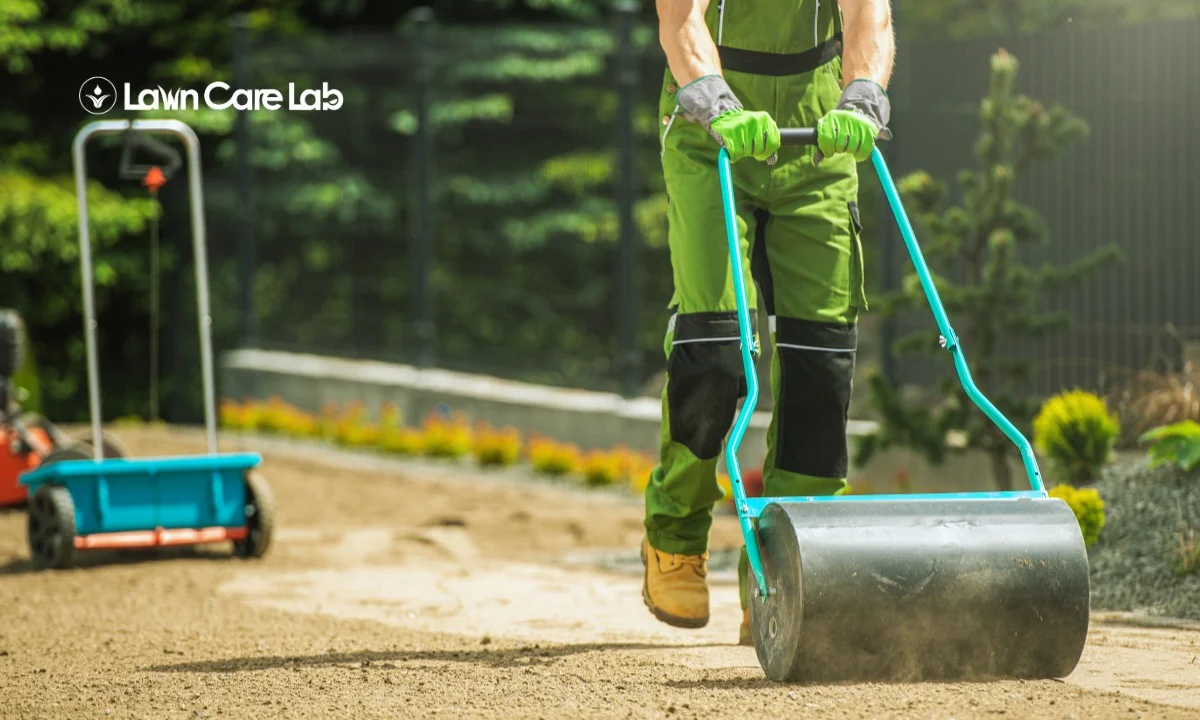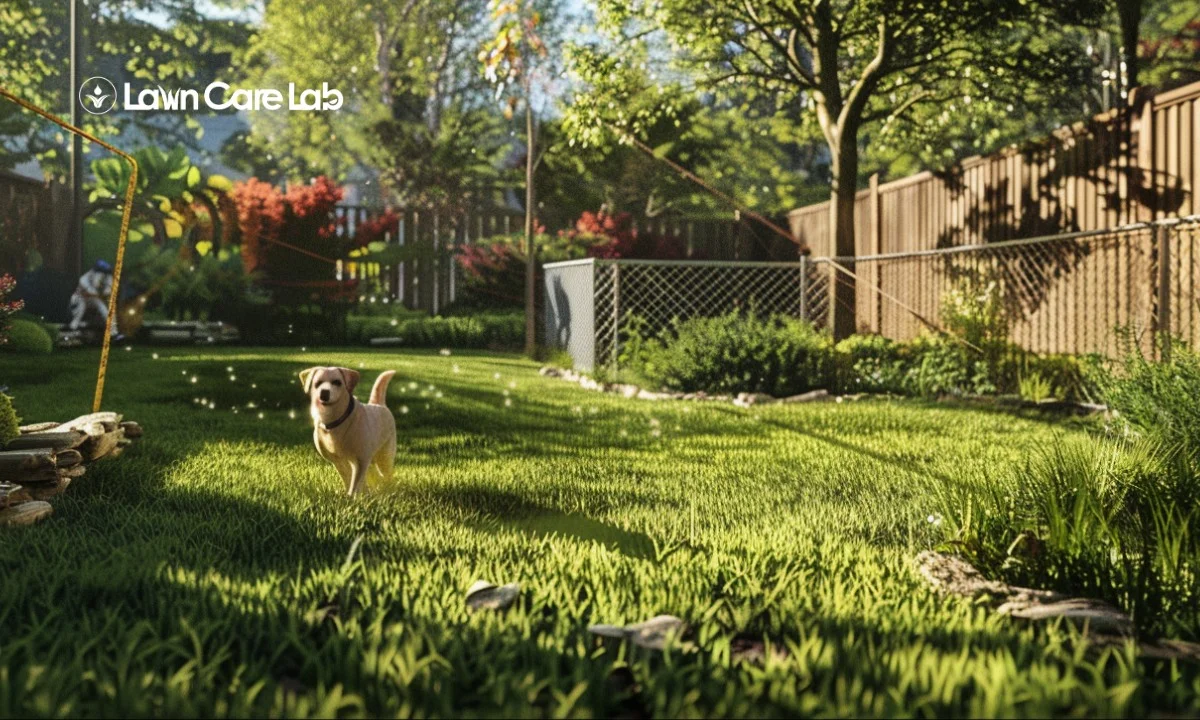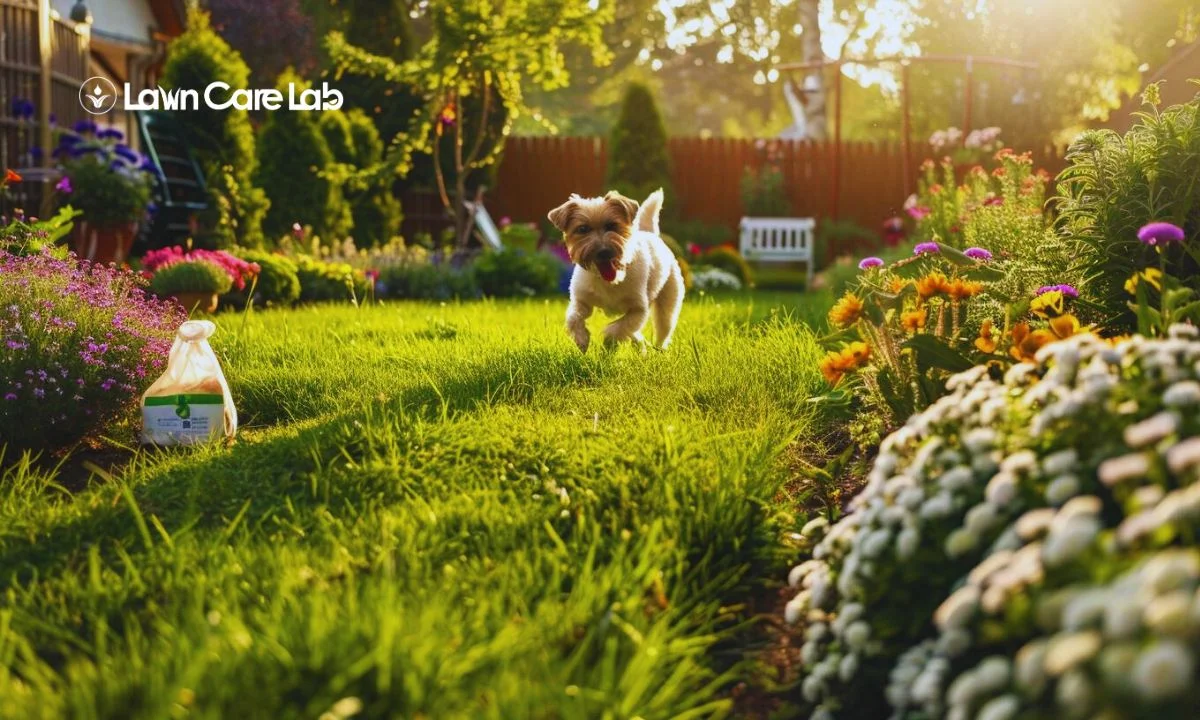Lawn rolling is a simple yet effective process that can give your lawn a smooth and even appearance.
With our expert lawn roller strategies, you can easily eliminate any imperfections caused by weather conditions or animal activity and improve the health and longevity of your lawn.
Don’t wait any longer; get started on your perfect lawn today with lawn roller strategies!
Table of Contents
Fixing Bumps and Hollows
A healthy lawn requires dealing with bumps and hollows that can harm its aesthetic appeal and health.
Identify the root cause and take corrective measures like topdressing or lawn rolling to level out the terrain.
Maintaining a vibrant lawn is a proactive endeavor that requires a keen understanding of the challenge at hand.
Evening Out Uneven Areas
Use a lawn roller to even out your lawn. Wet the ground, roll the lawn roller over the area, and repeat if necessary.
Soil compaction, poor water drainage, and pest infestations can cause an uneven lawn. Aerating, top-dressing, and reseeding can help address these issues.
Next up, we’ll discuss how to handle the task of filling irrigation ruts.
Filling Irrigation Ruts
Fixing irrigation gaps caused by watering equipment requires locating them and filling them with sand, soil, and compost.
This blend should be poured into the gap, gradually adding layers. Here’s a simple guide:
| Step | Material | Action |
|---|---|---|
| 1 | Sand | Fill half the gap |
| 2 | Soil | Add until gap is nearly full |
| 3 | Compost | Complete the filling of the gap |
Make sure to press down each layer before introducing the next one. This strategy not only rectifies the gap but also promotes grass growth. It would be prudent to alter your irrigation route to avoid such gaps’ recurrence.
You’ll surely achieve a smooth, gap-free lawn with patience and the right approach.
In the context of our increasingly eco-conscious society, it’s also worth noting that this method utilizes natural materials and promotes healthy, sustainable lawn care.

Using Lightweight Rollers
Having a perfect lawn requires proper care and tools like lightweight rollers. These rollers are easy to maneuver and ideal for small, hard-to-reach spaces.
Rollers are used to even out patches and compact loose soil. They work best on soft soils with minimal damage risk. The rolling pattern is important for uniform coverage of the lawn.
Be patient in the soil compaction process. Excessive use of rollers can harm the health of your grass.
Consider using heavier rollers after getting comfortable with lightweight ones. Time and effort will help transform your lawn into a green oasis.
Selecting Heavier Rollers
Heavy lawn rollers are great for fixing deep ruts and large bumps. They compress soil deeper to create a solid foundation for new grass seeds.
However, using them excessively can cause soil over-compaction, which hampers root growth and causes waterlogging. Use these rollers thoughtfully to improve your lawn rather than harm it.
Considering Spike Rollers
The spike roller is a tool with spikes that penetrate the soil to counteract compaction and encourage root development. It complements the heavier rollers in your lawn care toolkit.
Here’s why they matter:
- Spike rollers amplify your lawn’s capacity to absorb water.
- By penetrating the soil, they facilitate a greater uptake of nutrients.
- They act as an effective solution to soil compaction.
- They foster the growth of robust roots.
- Their use can be integrated with other lawn care tools for a comprehensive approach.
The next step involves the comprehensive rolling of your lawn, a pivotal move in pursuing a pristine yard.
Rolling the Entire Lawn
Rolling your lawn during spring can result in a flat, uniform lawn. Avoid overdoing it, which may cause soil compaction and hamper root development.
Consider this useful chart as your reference:
| Task | Frequency | Roller Type |
|---|---|---|
| Spring Roll-out | Once, during spring | Water-filled |
| Regular Maintenance | As required | Lightweight |
| Repair and Recovery | Post-seeding or sodding | Spike |
Picking the right roller is crucial for your lawn. Use water-filled rollers for spring, lightweight ones for regular upkeep, and spike rollers for repair and recovery.
Follow these methods for a flawless lawn.
Focusing on Problem Spots
Customize your approach for troubled lawn areas caused by pests, diseases, or physical damage.
Here are some strategic steps to manage them:
- Problem Recognition: Be alert for unusual color, texture, or growth pattern changes.
- Specific Treatments: Employ remedies uniquely tailored to the problem you’ve identified.
- Consider Reseeding: For areas with extensive damage, reseeding might be viable.
- Regular Check-ups: Keep a keen eye on these areas to monitor whether the situation is improving or deteriorating.
- Patience is Key: One must understand that effective treatments require time to show results.
The essence of a flawless lawn isn’t confined to just routine maintenance. It also includes understanding how to manage irregular issues.
As we progress to the next segment, we’ll focus on maintaining the correct rolling techniques for optimal results.
Maintaining Proper Rolling Technique
Knowing how to use a lawn roller to maintain a healthy and attractive lawn is important. First, clear any debris and slightly moisten the soil. Choose a lawn roller based on your soil type – a light one for sandy soil or a denser one for clay soil.
| Task | Instruction |
|---|---|
| Lawn Preparation | Clear clutter, dampen soil slightly |
| Roller Selection | Light for sandy soil, dense for clay soil |
| Rolling Technique | Roll in straight lines, ensuring a slight overlap |
Roll your lawn correctly by moving in straight lines with a slight overlap on each pass to ensure adequate care for every part.
Next, we will discuss the role of rolling in alleviating soil compaction problems.
Improving Soil Compaction by Lawn Roller
Tackling soil compaction issues can make a world of difference in nurturing a vibrant and robust landscape. This isn’t about tedious maintenance; it’s about adopting the right strategies.
Let’s walk through a practical, step-by-step plan:
- Pinpoint the problem: Struggling grass growth in certain lawn areas could be a symptom of soil compaction.
- Employ a lawn roller: A lawn roller is a potent tool in combating soil compaction.
- Incorporate habitual aeration: Consistent aeration fractures the compacted soil, allowing grass roots to grow deeper.
- Adopt proper watering techniques: Overwatering is a potential culprit behind soil compaction. Balance is key; ensure you’re providing the adequate amount.
- Regulate traffic on your lawn: Heavy foot or vehicle traffic can press down the soil; try to reduce this as much as possible.
‘Healthy soil is the foundation of a thriving lawn,’ a seasoned gardener once said. And he couldn’t have been more right.
Enhancing Nutrient Absorption
Addressing soil compaction and optimizing the soil’s nutrient uptake capacity is essential to achieve a healthy and green lawn.
Choose a premium fertilizer with vital nutrients like nitrogen, phosphorus, and potassium. Follow the instructions carefully to prevent excessive use that could harm your lawn.
For better soil health, consider adding organic matter like compost or manure. This provides extra nutrients and improves soil structure, allowing for better water retention and nutrient uptake.
Periodic aeration can further contribute to this goal, as it facilitates easier penetration of water and nutrients into the soil.
Conclusion
Get better at lawn rolling with smart techniques. Fix lumps, depressions, and patches easily, no matter what lawn roller you use. Improve soil compression by using the right technique.
As you refine your skills, you’ll optimize your soil’s potential to absorb nutrients and eventually cultivate a flawless landscape.
Lawn rolling isn’t a mere errand – consider it an art.
So, don’t hesitate, prepare yourself and manifest the lush, green lawn you’ve always envisioned.
- How to Create a Lawn Care Schedule for Southern Climates - October 30, 2024
- How to Use Compost Tea to Boost Lawn Growth and Soil Health - October 23, 2024
- The Best Grasses for Saltwater-Exposed Lawns: Coastal Lawn Care - October 17, 2024




